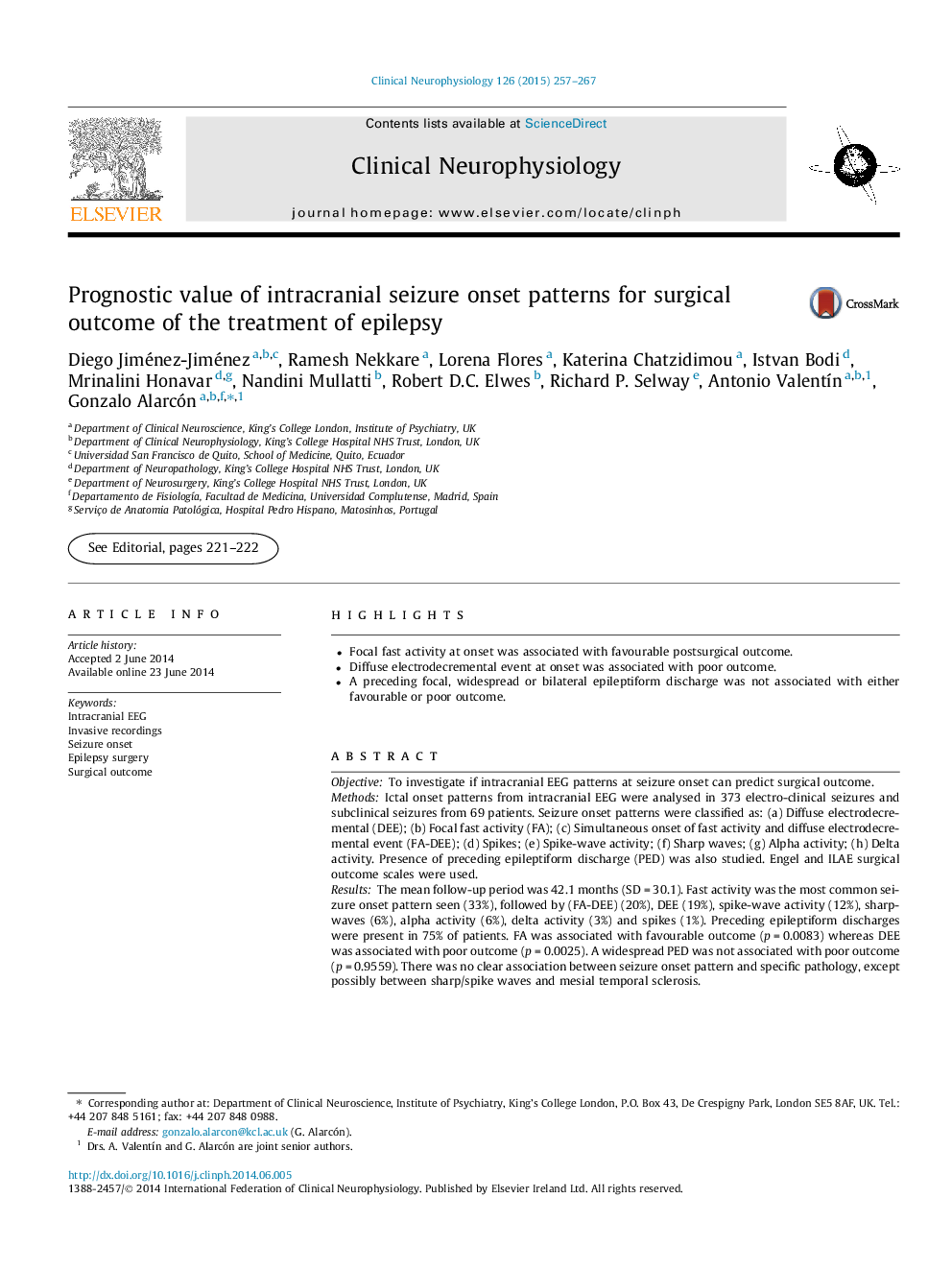| Article ID | Journal | Published Year | Pages | File Type |
|---|---|---|---|---|
| 3043068 | Clinical Neurophysiology | 2015 | 11 Pages |
•Focal fast activity at onset was associated with favourable postsurgical outcome.•Diffuse electrodecremental event at onset was associated with poor outcome.•A preceding focal, widespread or bilateral epileptiform discharge was not associated with either favourable or poor outcome.
ObjectiveTo investigate if intracranial EEG patterns at seizure onset can predict surgical outcome.MethodsIctal onset patterns from intracranial EEG were analysed in 373 electro-clinical seizures and subclinical seizures from 69 patients. Seizure onset patterns were classified as: (a) Diffuse electrodecremental (DEE); (b) Focal fast activity (FA); (c) Simultaneous onset of fast activity and diffuse electrodecremental event (FA-DEE); (d) Spikes; (e) Spike-wave activity; (f) Sharp waves; (g) Alpha activity; (h) Delta activity. Presence of preceding epileptiform discharge (PED) was also studied. Engel and ILAE surgical outcome scales were used.ResultsThe mean follow-up period was 42.1 months (SD = 30.1). Fast activity was the most common seizure onset pattern seen (33%), followed by (FA-DEE) (20%), DEE (19%), spike-wave activity (12%), sharp-waves (6%), alpha activity (6%), delta activity (3%) and spikes (1%). Preceding epileptiform discharges were present in 75% of patients. FA was associated with favourable outcome (p = 0.0083) whereas DEE was associated with poor outcome (p = 0.0025). A widespread PED was not associated with poor outcome (p = 0.9559). There was no clear association between seizure onset pattern and specific pathology, except possibly between sharp/spike waves and mesial temporal sclerosis.ConclusionsFA activity is associated with favourable outcome. DEE at onset was associated with poor surgical outcome. Widespread/bilateral PEDs were not associated with poor or good outcome.SignificanceFA appears to be the best marker for the epileptogenic zone. Surgery should be contemplated with caution if DEE is the first ictal change. However, a widespread/bilateral PED at onset is common and should not discourage surgery.
